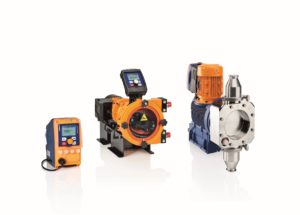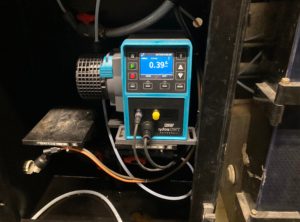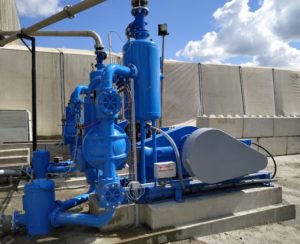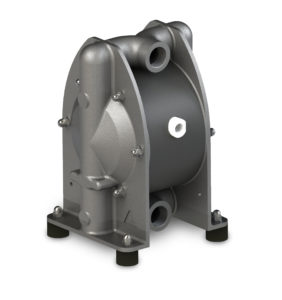CO2-cleaning with diaphragm pumps from LEWA
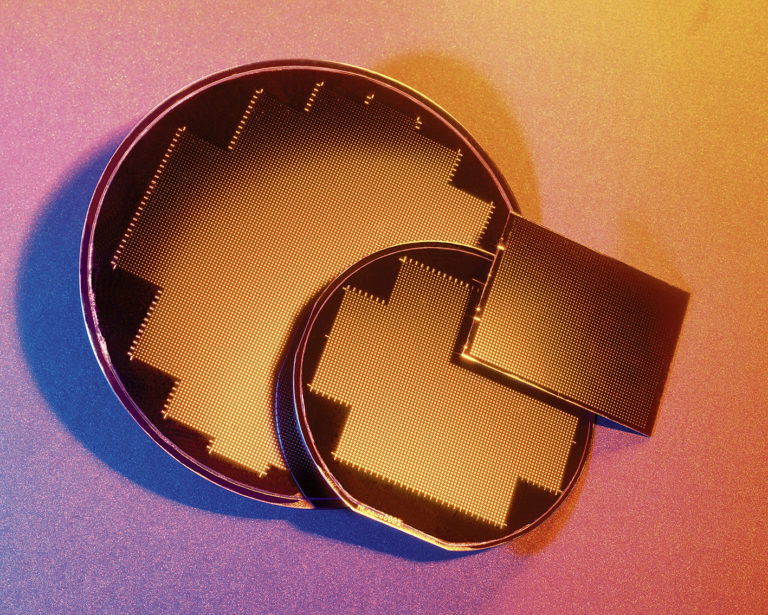
Electronic components such as integrated circuits (ICs) are produced from silicon wafers. They are the basic components of all electronic devices, including laptops, tablets, smartphones, cameras, and LCD televisions. (Image source: LEWA GmbH)
The wafers have to be processed to just a few nanometers through many steps and cleaned multiple times during processing. The advanced cleaning process using supercritical CO2 (SCCO2) offers several advantages especially in the metal particles elimination, which is difficult by using wet processes established that work with ultrasonic bath with solvents / water. LEWA diaphragm pumps have proven their reliability for wafer cleaning with SCCO₂ in the Semiconductor Industry. The cleaning process proceeds as follows: CO2 is compressed to at least 75 bar using a diaphragm pump in a cleanroom and then heated to at least 35 °C. Above this temperature, the CO₂ transitions from the liquid state to the supercritical state. Experience in handling liquefied gases is essential for reliably meeting the requirements for this process. LEWA GmbH has this know-how. Its product range includes customized Ecoflow and Triplex diaphragm pumps – the perfect pumps for this application. The certificate for cleanroom compatibility from the Fraunhofer Institute (Fraunhofer IPA - TESTED DEVICE) confirms the pumps' cleanroom compatibility in accordance with recognized standards and directives.
Electronic components such as integrated circuits (ICs) are produced from silicon wafers. They are the basic components of all electronic devices, including laptops, tablets, smartphones, cameras, and LCD televisions. Wafer production is based on a complex process that includes more than 100 production steps and takes several weeks. Cleaning takes place repeatedly at various production stages. It is an essential, consistently implemented process. In the past and even sometimes today, cleaning was primarily done using an ultrasonic bath with solvents / water. This method consumes a great deal of resources. It requires high fluid consumption and a range of chemical additives. In addition, the cleaning result is not always perfect. Cleaning with supercritical CO₂ offers several advantages for the semiconductor industry. "The wafer cleaning process involves ongoing development," explained Joachim Bund, Head of Sales Division Process Industry & Downstream at LEWA. "Many renowned manufacturers in the semiconductor industry have completely converted to the carbon dioxide cleaning process with our diaphragm pumps."
CO₂ cleaning process with diaphragm pumps in the cleanroom
LEWA offers cleanroom-compatible metering pumps with PTFE sandwich diaphragms that are especially well-suited to this process. Reliability, the option of cleaning, and metering accuracy are essential aspects of this application. A specially developed diaphragm rupture signal delivers additional process safety. The diaphragm pump is installed in a wafer cleaning cabinet where it compresses the liquid CO2 to at least 75 bar in order to attain the appropriate cleaning properties. "In the next step, carbon dioxide is heated to at least 35°C by a heat exchanger and injected into the pressure chamber," said Claudia Schweitzer, Product Manager at LEWA, to describe the process. At that point, the CO₂ has reached its supercritical state, means SCCO2 – between that of gas and liquid. In this state, it has excellent solvent properties against certain non-polar impurities such as resin and particles, and can penetrate the smallest gaps in the wafer thanks to its low viscosity. After cleaning, the wafer is flushed with pure CO2 to ensure that absolutely no residue remains on it. The pressure is then lowered, which causes the sublimation of the CO2. All components are completely dried after cleaning thanks to this direct transition into the gas phase. Upon drying, they are free of solvents. Cleaning with SCCO2 has the advantages of being more environmentally friendly and more economical than conventional cleaning processes.
Additional cooling jacket due to resulting compression heat
Based on its years of experience in the area of liquefied gas conveyance, LEWA knows to take the generation of unwanted compression heat into account. "Cooling is always a key theme when dealing with liquefied gases," said Bund. "Heat can form during compression in the pump head. Once the liquid is near its vapor pressure, it transitions into the gaseous state. This may cause cavitation during the suction stroke, which makes it necessary to use an additional cooling jacket for the pump head." Cooling also improves the pump's hydraulic efficiency.
The material selection for wetted parts is adapted to the specific process. For example, they include reducing the proportion of metals that come into contact with the fluid and special requirements for the surface quality of the pump head. These individual parameters vary depending on the process and are adjusted using special materials as well as varying sizes and connections for the pumps.
Source: LEWA GmbH


